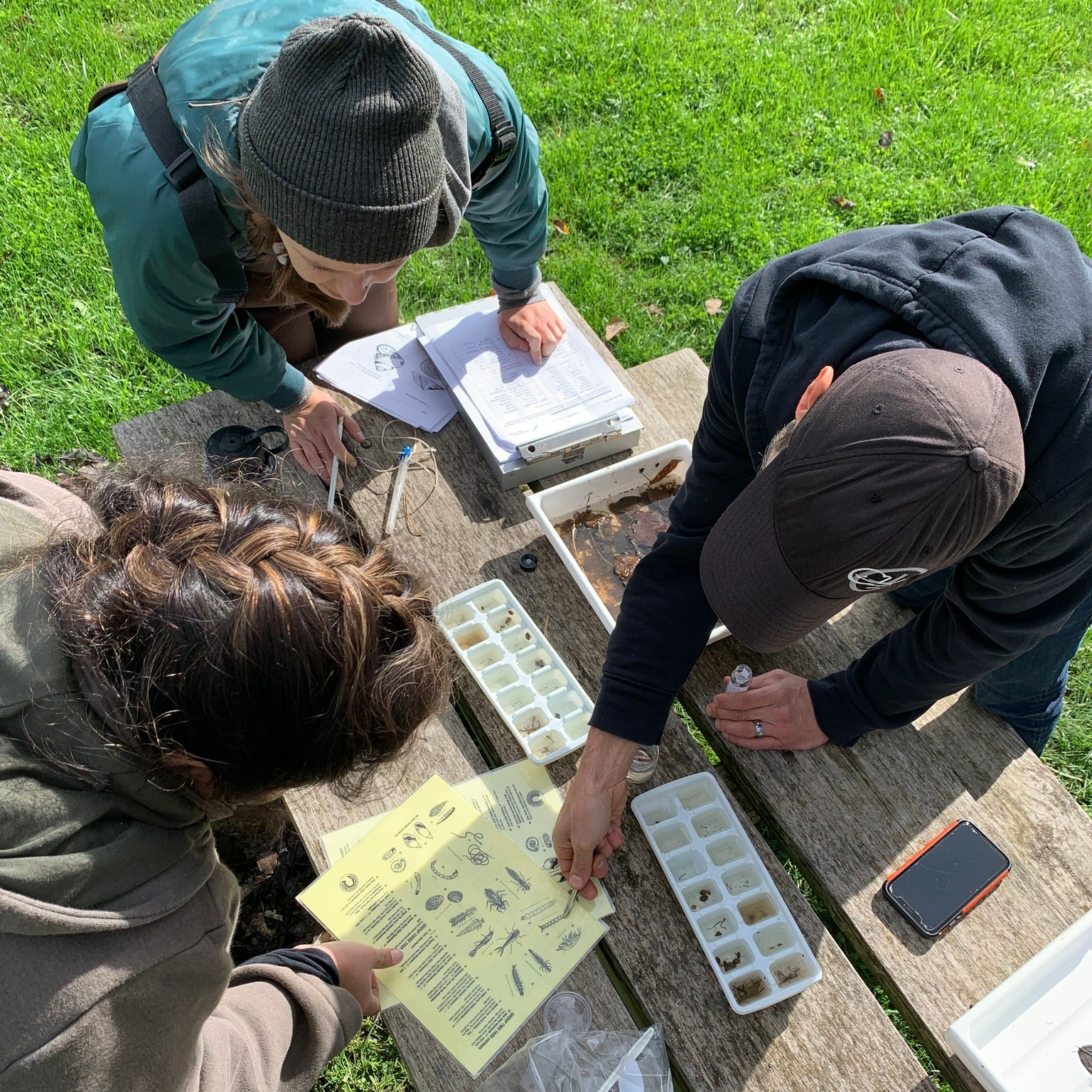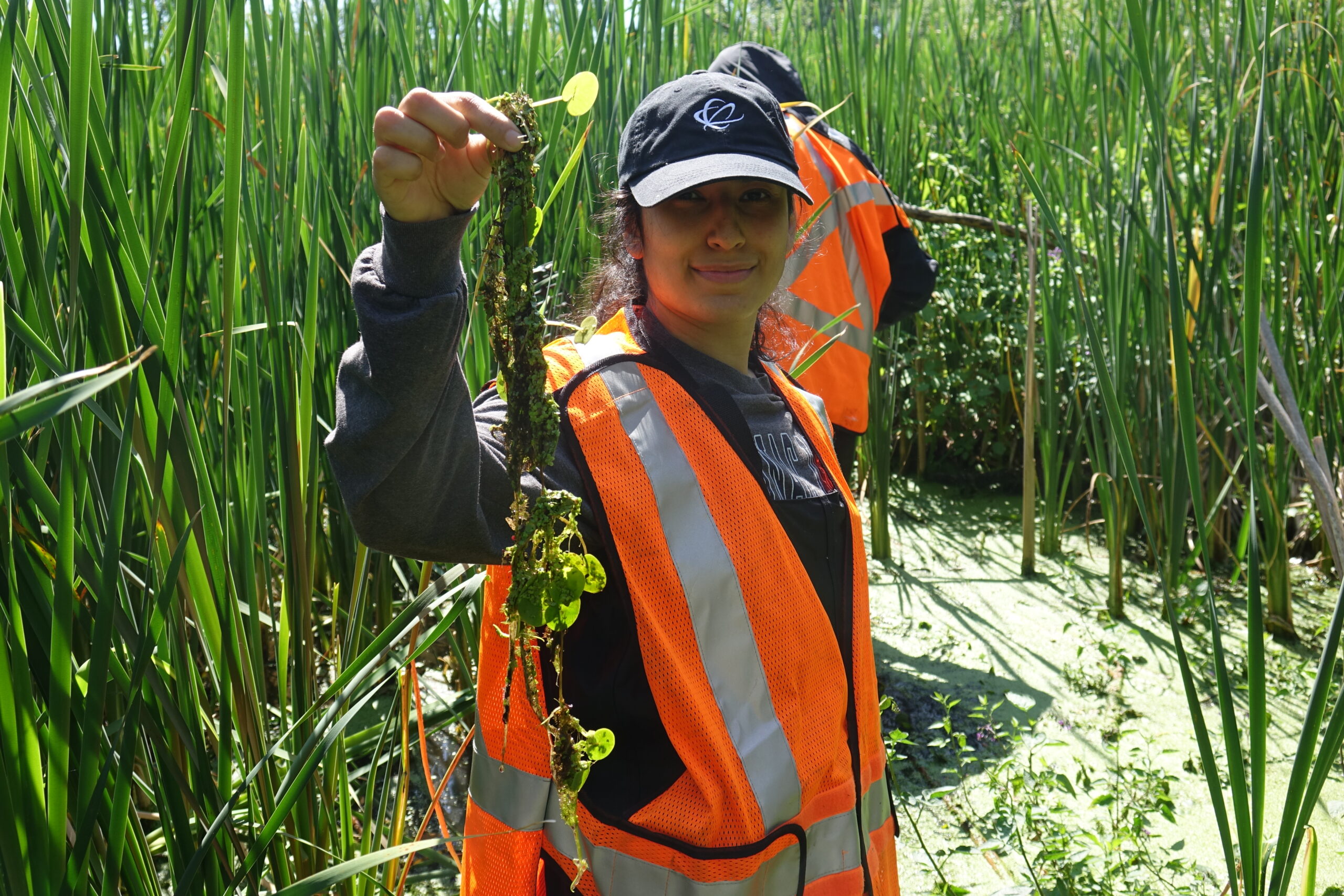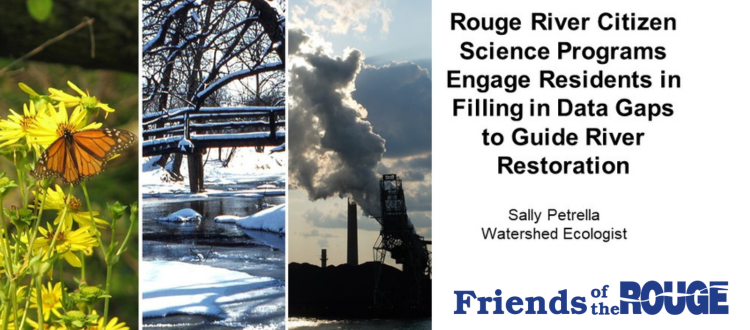FOTR’s Monitoring Programs Continue to Grow
For over 20 years, FOTR has been engaging residents in collecting data about the Rouge River watershed. These long-standing programs, which include the frog and toad surveys, bug hunts, stonefly searches, and fish monitoring accomplish the dual goals of collecting long term data and developing stewardship. After several years of scaling back these programs due to lack of funding, these programs have begun to grow as we have found more stable funding and new partners.
Invasive Species Work Expands
For the past two years, we have been surveying for the invasive aquatic plant European frogbit to better understand how this heart-shaped floating plant is spreading from an initial invasion in Novi and suffocating ponds. This year, we will continue frogbit surveys and will also be looking for the invasive red swamp crayfish. These bright red natives to the southern United States were also found in Novi and have been reproducing at a phenomenal rate, outcompeting native crayfish and gorging on fish and amphibians. In a partnership with the Clinton River Watershed Council and funding from the state, the Monitoring Team will be checking local ponds to see how far red swamp crayfish have spread.
Fish Surveys Grow
Last year, in addition to our annual fish community surveys, we collected fish to be tested for PFAS, an emerging contaminant of concern. After all of the results came in positive for this toxic group of chemicals, we will continue to work with Wayne State University, the Ecology Center, and the state to further understand the extent of the contamination and what this means for anglers. This year, we will be looking at another aspect that limits fish in the Rouge River – culverts. In a partnership with the Department of Natural Resources, we were just awarded a grant from the Fisheries Habitat Grant Program to examine culverts in the Lower Rouge to identify those that limit fish passage. The results will be used to prioritize culverts for repair.
FOTR presented the accomplishments of the monitoring program at the International Association of Great Lakes Research Conference in Toronto on May 10.
Read more information about the monitoring programs: https://therouge.org/our-work/river-monitoring/


Categories
-
 BlogRead the latest blog posts from your FOTR team.
BlogRead the latest blog posts from your FOTR team. -
News & EventsLearn more about upcoming FOTR events and projects
-
Our WorkShort description about the category for context.
